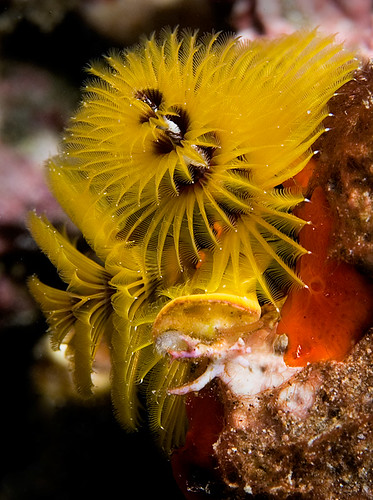My goal (one of them) for the upcoming diving season is to kick my photography skills up a few notches. I'm reading a lot of articles and so on and some of it makes sense and some of it almost does but not quite. Re: using the white balance function which some people seem to find quite useful - I am in need of some clarification. If the camera is going to fire the flash (which it almost always does), am I correct in thinking that you shouldn't adjust it (i.e., using a white card) because you don't have the light available to adjust it according to the dominant light when the pic will actually be taken and the camera will determine the best white balance automatically for the strobe. And since the strobe almost always goes off underwater, it seems like white balance would mostly be important for adjusting out-of-strobe-range background in which case the holding-the-white card at arms length would be irrelevent anyway because it is in the foreground. So I guess what I'm asking is if the only time it makes sense to adjust WB with a white card is when you are taking a foreground pic sans flash. If you've got both foreground and background in focus in your shot, then it just seems like you're in an impossible dilema and the only thing to do if you really find it neccesary to fiddle with this is to do it post hoc with some software that can treat the fore- and background independently.
More philosophically, is there really any such thing as true color? I appreciate that you can make things look more like they would look if they were above water in the sun, but even in the atmosphere don't things have a color bias that is a function of white sunlight filtering through the atmosphere. Put differently, is the sky REALLY blue? Not that I'm a big advocate of reality or anything, but isn't the uncorrected color the most 'true'. I've used color 'correction' on some pics and not on others, but I often like the 'uncorrected' version better. I think it sometimes conveys more of the ambience of being underwater. But maybe I just don't understand the function of white balance well enough.
More philosophically, is there really any such thing as true color? I appreciate that you can make things look more like they would look if they were above water in the sun, but even in the atmosphere don't things have a color bias that is a function of white sunlight filtering through the atmosphere. Put differently, is the sky REALLY blue? Not that I'm a big advocate of reality or anything, but isn't the uncorrected color the most 'true'. I've used color 'correction' on some pics and not on others, but I often like the 'uncorrected' version better. I think it sometimes conveys more of the ambience of being underwater. But maybe I just don't understand the function of white balance well enough.





